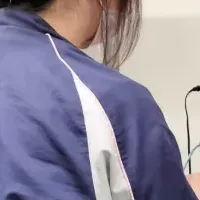
The Exoskeleton Market: Projected Growth to $2.03 Billion by 2030 Driven by Technological Advances
The Growing Exoskeleton Market: A Future Worth $2.03 Billion
The exoskeleton market is experiencing rapid expansion, with a projected increase from USD 0.56 billion in 2025 to an impressive USD 2.03 billion by 2030, marking a substantial compound annual growth rate (CAGR) of 29.4%. According to a recent report by MarketsandMarkets™, this growth is instrumental in showcasing the evolving landscape of wearable robotic technology designed to enhance human capabilities.
Understanding Exoskeletons
Exoskeletons are innovative wearable robotic systems tailored to support mobility, decrease fatigue, and facilitate rehabilitation processes. They play a crucial role in helping those with mobility challenges regain independence and enhance their quality of life. The demand for these devices is being propelled by breakthroughs in artificial intelligence and machine learning, which help make these systems smarter and more adaptable to individual needs.
Key Drivers of Market Growth
A driving force behind the booming exoskeleton market is the increasing demand for robotic rehabilitation solutions, particularly within the healthcare sector. With organizations increasingly recognizing the benefits of these technologies, the FDA's clearance of medical exoskeletons has significantly boosted confidence among healthcare providers and facilitated their clinical adoption.
Mobile Exoskeletons Lead the Way
Within the exoskeleton market, mobile exoskeletons are expected to emerge as the most significant segment due to their broad applicability across various sectors, including healthcare, industrial, and defense. Unlike stationary models confined to clinical environments, mobile exoskeletons offer users the ability to walk, lift, and perform complex movements in actual conditions, allowing for improved rehabilitation outcomes outside of traditional settings.
Emphasis on Lower Extremity Devices
Focusing on specific body parts, the lower extremities segment is projected to dominate the market in the coming years. This trend is driven by a notable rise in demand for mobility solutions tailored for individuals suffering from spinal cord injuries, strokes, and other lower limb disabilities. Statistics highlight that over 15 million people globally live with spinal cord injuries, emphasizing the pressing need for assistive mobility technologies. In the U.S., annual new cases reported by the National Institutes of Health stand at approximately 18,000, further driving the necessity for effective mobility solutions.
Regional Insights: North America to Lead
Geographically, North America is poised to hold a dominant position in the exoskeleton industry during the forecast period. The U.S. market is bolstered by substantial investments, robust demand across different sectors, and advancements in wearable robotic technologies. The country's developed healthcare system and substantial military applications further contribute to its leadership in the exoskeleton sector. Notably, Ekso Bionics Holdings, Inc., a key player in the space, recently made headlines with a public offering designed to raise funds for continued innovation in exoskeleton technologies.
Prominent Players in the Exoskeleton Market
Prominent brands in the exoskeleton market include Ekso Bionics, Ottobock, DIH Medical, Comau, Myomo Inc., CYBERDYNE, Lifeward Ltd., and Hyundai Motor Group Robotics LAB, among others. These companies are at the forefront of developing innovative solutions catering to the functional needs of diverse users, from medical patients to industrial workers.
Conclusion
The exoskeleton market is on the cusp of a groundbreaking transformation, underscored by technological advancements and a growing awareness of the benefits these systems offer individuals across various sectors. As the market evolves with rising investment and development opportunities, the potential for exoskeletons to reshape mobility and rehabilitation continues to expand, promising a future where mobility limitations may become a thing of the past.
Topics Consumer Technology)










【About Using Articles】
You can freely use the title and article content by linking to the page where the article is posted.
※ Images cannot be used.
【About Links】
Links are free to use.